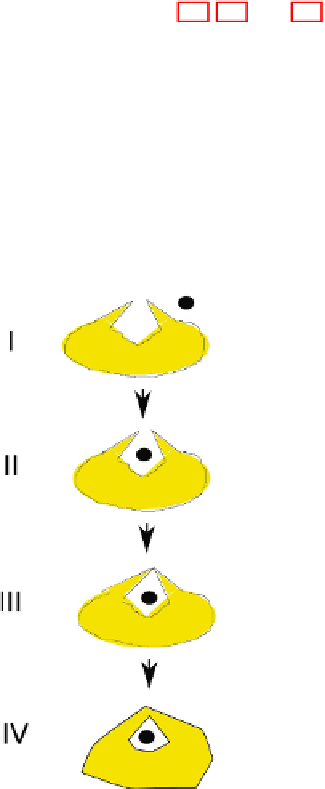Information Technology Reference
In-Depth Information
pass through the cell skin within a vesicle (Figs. 4.5, 4.6, and 4.7). As depicted in
Fig. 4.5, after wrapping the external object and after closing the concavity mouth,
a separation of two membranes is realized: the original one from the newly formed
internal membrane. In experiencing such a kind of mechanism, the cell acquired an
ability which became essential in developing its symbiont activity, when it was able
to catch other cells for devolving to them, under its control, specific tasks and con-
verting its main activity to more directive roles rather than to operative roles. This
step was essential in the passage from prokaryote to eukaryote cells, and follows the
general principle, continuously used by life, of
reusing acquired competencies
for
going on in the construction of more complex abilities.
Fig. 4.5
Phagocytosis: Invagination (I), Predation (II), Endocytosis (III), Encapsulation (IV)
Phagocytosis is a crucial point in passing from the acquisition from the environ-
ment of small organic molecules, to the ability of acquiring bigger objects which do
not pass through
ports
realized by
protein channels
. To this end, it is easy to realize
that a basic mechanism of mitosis is reused for other purposes. In fact, as is shown
in Fig. 4.6, when a cell separates in two distinct cells (mother and daughter cells)
we have a situation depicted at the top of Fig. 4.6, which we call
devesiculation
,
because the new cell is released in the environment as a separated entity. When, after
invagination and the closure of the invagination mouth, the situation depicted at the
bottom of Fig. 4.6 is realized, then we have a situation analogous to mitosis, with
the difference that now the new formed vesicle can be released internally to the old
one. For this reason, we call it
invesiculation
. In this case, apart from the realization




